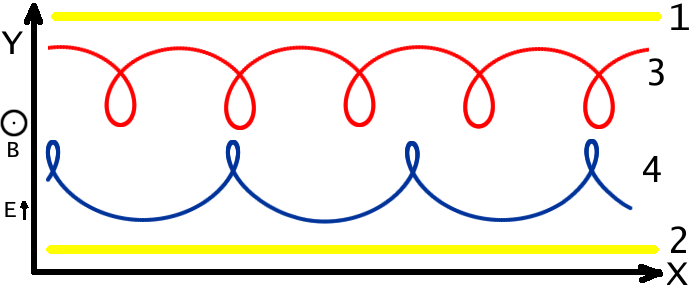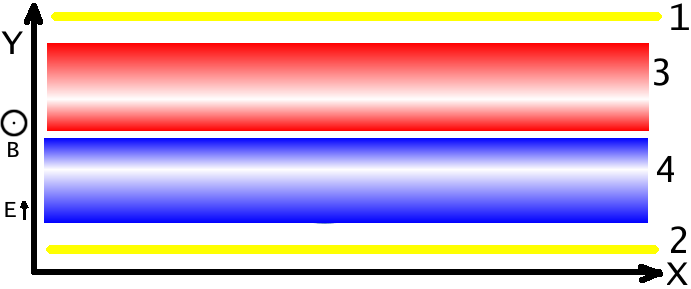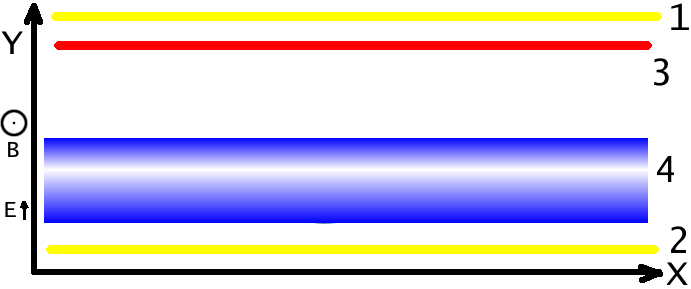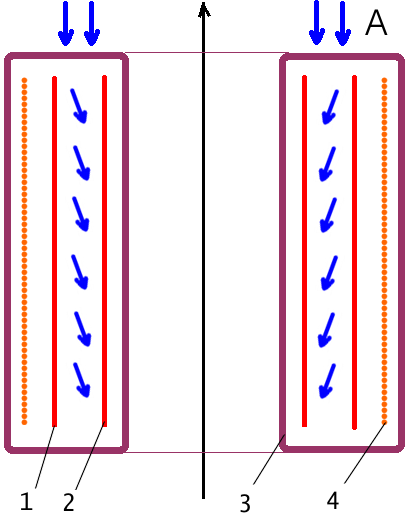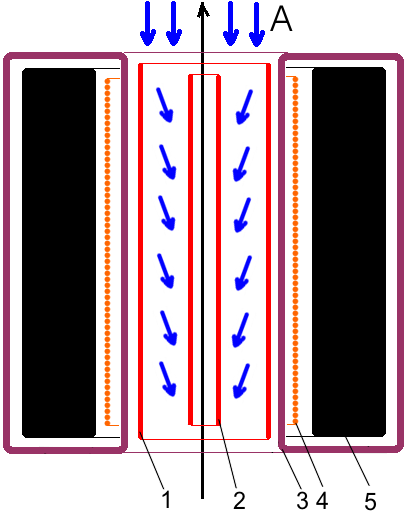Alexandr A.Shpilman ( sah@nursat.kz )
The Resonant Analyzer of
"Axion (Spin) Field"
(project)
In the article "The
optical generator of "Axion (Spin) Field"
with cross by EM-fields (N4/99)", "The optical generator of "Axion (Spin) Field" with cross by EM-fields (N5/99)" and "The
Generator of the "Axion Field " Sort 5 (N1/01)" generation of the
"axion field" in crossed EM fields was
described. Probably, similar designs we can use for observations of a spectrum
of resonant frequencies of a component of the analyzed "axion field", similar to resonant spectra of nuclear
magnetic resonances (NMR) and electron spin resonance (ESR).
|
|
|
|
|
|
In crossed EM fields components with
pseudo-positive 3 (see Fig.1) and with pseudo-negative 4 charge
drift along axis X, making oscillatory movements along axis Y in
a magnetic induction which is directed perpendicularly of the pattern of the
figure and lies between the electrode 1 with negative potential and the
electrode 2 with positive electric potential. As the oscillatory
movements along axis Y of a component of the "axion
fields" are not synchronized on a phase, we shall actually have two
smeared strips of a component with pseudo-positive 3 (see Fig.2) and
with pseudo-negative 4 charge.
If we add an electric signal with
frequency, multiple Larmor's frequency, to electric
potential of the electrodes 1 and 2, we can achieve
synchronization of a phase of the oscillatory movements along axis Y of
a component of the "axion field", for
example, with pseudo-positive 3 charge (see Fig.3). After deenergizing of an external high-frequency signal the phase
synchronism of fluctuation components of the "axion
fields" along axis Y will be still kept for some time. These
fluctuations induce a variable electric voltage on the electrodes 1 and
2, which can be analyzed as well as in devices of a NMR and ESR.
In the offered method it is
necessary to take into account that the more a potential difference between
electrodes 1 and 2, the "axion
field" more strongly is split on separate components. And excessively
strong magnetic field can prevent penetration into the device the "axion field" from an external source.
|
|
On Fig.4
the example of "resonator" for the realization of offered method is
shown. The difference of electric voltage U
is moved on
cylindrical electrodes 1 and 2 satisfying the requirement:
U <= d^2*(e/m)*B^2/3
|
where |
d - distance
between electrodes 1 and 2; |
Toroidal 3 and cylindrical 4 electric coils create
magnetic field of spiral structure in a backlash between cylindrical electrodes
1 and 2. In result the components of the "axion
fields" A drift in crossed EM fields and reel in a spiral around of
the central cylindrical electrode 2. It increases effective length of
the resonator and accordingly increases a level of a measured signal.
|
|
It is not desirable to use
dielectric or ferrite in a backlash between cylindrical electrodes 1 and
2 as the "axion field" can induce in
them induced the "axion field" that will
reduce sensitivity of the device. The coils of electric wire of a toroidal winding 3 should settle down sparsely enough for
the minimal distortion of the "axion
fields" A.
But,
alas, this obvious design is not efficient. At any essential intensity of a
magnetic field its magnetic vector potential plays the basic role, this
magnetic vector potential will reject the "axion
field" to an axis toroidal coils 3 or will supersede it on periphery of
the device. Taking this factor into consideration, it is better to use a design
shown on Fig.5. In it the negative electric potential concerning the electrode 1 (tubes) and all the
device moves on the electrode 2
(tube). The ferrite tube 5
strengthens magnetic vector potential on the axis of a toroid,
so the vector potential of the set helicity is formed
together with the vector potential of a magnetic field of the electric coil 4 in a backlash between the electrodes 1 and 2. Besides, the ferrite tube 5
closes all magnetic fields inside the device.
